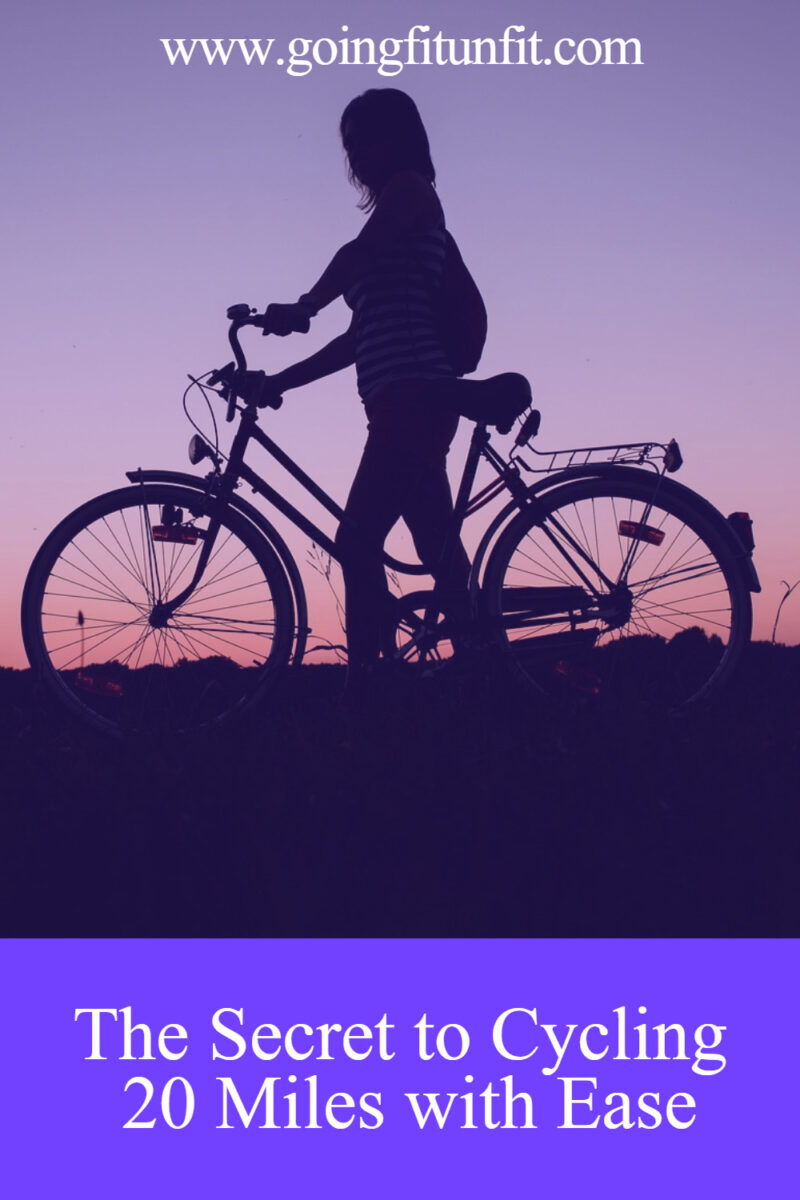
Biking is one of the best outdoor activities for cardio workouts. But how long does it take to bike 20 miles? Answering the question “How long does it take to bike 20 miles?” is challenging due to numerous factors like health condition, bike type, terrain, weather, and route that impact the result.
Google Maps and Strava can calculate estimated ride times based on average speeds. The typical cyclist maintains a 17 mph pace.
Cycling a distance of 20 miles usually takes about 100 minutes or one hour and 40 minutes. However, this is a rough estimate, and several factors can affect the time needed to cover the distance. So, take that amount as a goal to reach, not the number you will see from the start.
Is biking 20 miles Hard for a Beginner?
If your fitness level is poor, it may have a significant impact on your ability to ride a bike for a long time. Although young individuals with moderate fitness can ride for up to 30 miles, an older or less healthy person may find it challenging to finish a 7-mile ride in one attempt.
Distance in Miles | Difficulty Level |
0 – 7 | Very Easy |
8 – 14 | Somewhat Easy |
15 – 21 | Do-able |
22 – 28 | Challenging but Do-able |
29 – 35 | Hard |
35 + Miles | Not Fit for Beginners |
Many teenagers have the energy to participate in various physical activities, such as running, swimming, or regular exercise routines, without experiencing significant discomfort. So, they may not find a 20-mile bike ride particularly difficult.
However, we are focusing on the average bike rider between the ages of 18 and 40 who is either a beginner or planning a longer journey. Even for this group, completing a continuous 20-mile ride in 2 hours is still feasible.
Cycling may initially seem tiring, yet it can significantly benefit your health. This low-impact exercise works out your lower body muscles without putting too much strain on your joints. You don’t have to cycle every day, but adding in a few miles each week can really make a difference in your overall fitness.
Consistent biking can lead to a leaner physique, improved mental acuity, and increased lung capacity. Moreover, it enhances joint mobility, alleviates stress, and strengthens and flexes muscles.
Factors That Affect How Long It Takes to Bike 20 Miles

1. Your Fitness Level
In the beginning, your biking speed will mainly be determined by your fitness level. Your initial times may vary significantly based on how accustomed you are to constant exercise, especially biking.
For beginners who are not physically fit, even a 10-mile ride can be a struggle. In contrast, professionals can maintain an average speed of 23-26 mph, completing a 20-mile ride in just 50 minutes.
New riders will get tired, go slower at times, and will have to take breaks. All of this is normal and should be accounted for. If you’re just starting, expect to take an extra 40 minutes at the very least.
The massive advantage of any exercise is that the more time you invest in it, the better you’ll do. If you keep practicing your 20 miles, you will see constant improvement and shave minutes off in no time. Just don’t expect to reach the 100-minute mark on your first go; it might take a few weeks.

2. Type of Bike You Ride
The type of bike you ride is the deciding factor that determines how long it takes to cycle 20 miles. For example, with an electric bike, you can reach that distance in just 30 minutes without much effort. Similarly, choosing a hybrid can slow you down by 2-3 mph and 4-6 mph for a mountain bike.
Bike types largely depend on the road they’ll be used on. Road bikes are designed mainly for flat and paved routes. On the other hand, mountain bikes are designed for hilly terrains with irregular surfaces. Hybrid bikes, meanwhile, work as a middle point between the two.
If you want to get those 20 miles done in a cinch, you want to go for a road bike. Road bikes are lighter, take less force to pedal, and are generally faster, all of which are ideal traits for bicycle runs focused on distance over power. You’ll be wasting less energy and moving faster.
The difference with a hybrid bike shouldn’t be too notorious. But if you need or insist on using a mountain bike, make sure to change the tires. Otherwise, you’ll run out of breath faster than you’d want.

3. Approach To Your 20 Mile Target Bike Ride
If you’re a new cyclist looking to take a 20-mile bike ride, your strategy will have a huge impact on how long it’ll take.
For instance, if you break that ride up into smaller portions of just five miles each, you’ll complete your journey in less than the standard hour and forty minutes. That’s because our average speed tends to decrease with longer distances, so when asking someone how long a 20-mile ride takes, make sure to specify if it’s one long ride or several short ones.
4. Terrain and Your Bike Route
For new cyclists, navigating terrain is key for a successful ride. No matter the path–paved roads, dusty trails, rocks, or near sticky mud–gravity will have an effect on your speed. Uphill, you must work extra to counter gravity, and thus, you move slower. Conversely, going downhill gives you an extra boost, and you may move faster than desired.
When picking a route, look for flat and straight roads to maximize your average speed and minimize your total time. If the course is hilly and has more uphill rides, it requires a far greater effort than a flat route.
And don’t forget, a straight path makes it easier to pedal at your desired cadence. Avid cyclists know that tarmac is always easier than a bumpy trail, so it’s wise to plan accordingly.

5. Sports Gear And Weather Conditions
Then, there is the weather that affects your speed and performance. Sunny days are ideal for cycling as you will go faster with better control. Rainy days make it tougher to control your road bike, and you must use either a hybrid or mountain bike with greater friction or go slow.
Then there are the winds, which can work for or against you like gravity but on a smaller scale. If you follow the tailwind behind you, you will save a few minutes on each 5-mile set.
Alternatively, facing a horrible headwind pushing against you will only slow you down. Making your legs work overtime, fighting the wind, and going forward.
When you’re out cycling, the type of sportswear you wear can make a big difference in how fast you can go. On days with strong winds, lightweight, aerodynamic clothing can help you cut through the gusts and get ahead of the pack.
For an even bigger edge, wear the same kind of light and breathable spandex as professional riders use. Don’t forget to pay attention to the weight of your bike, too. Every ounce matters when you’re racing against the clock!
Final Thoughts
It’s possible to cycle 20 miles with ease – but it depends on the right combination of factors like health, bike type, terrain, weather, and route. To be safe and successful on your journey, ensure you are adequately prepared and be sure to build up your endurance gradually.
Cycling 20 miles is a rewarding experience that can take you to places unimaginable. With the right steps and a bit of commitment, you can enjoy the freedom of two-wheeled travel and experience all the benefits that it has to offer.









thanks for the great article
Thanks for this amazing post, really helpful.
I prefer stationary bike so the outside weather is not an issue.
A stationary bike is good too for those bad weather days or when you want to exercise while watching TV
Thank you for sharing